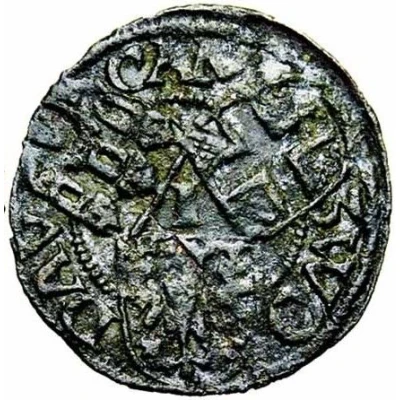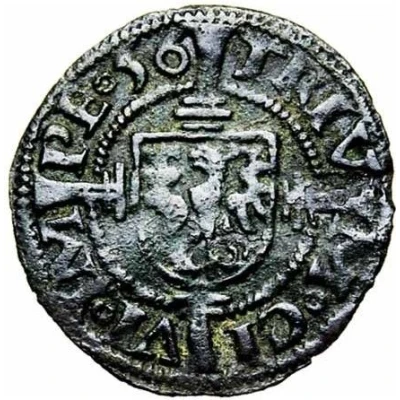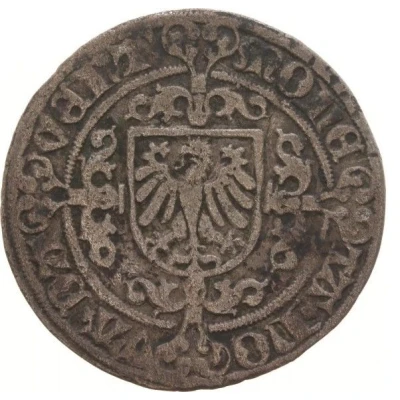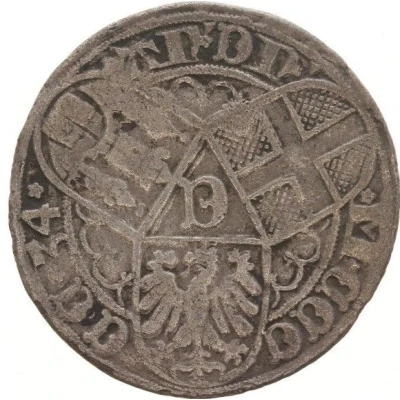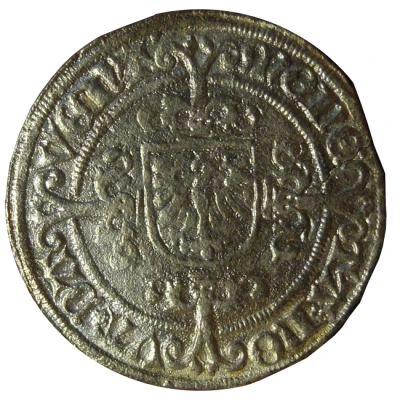
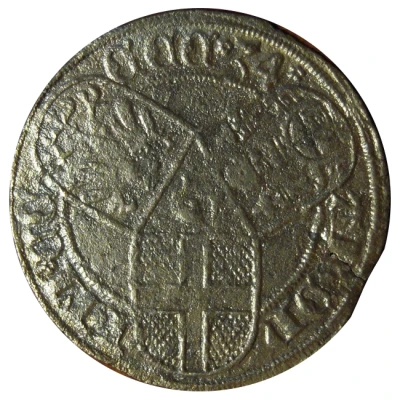

Obverse © Piet Stuivers (CC BY)
Gosseler
1534 year| Billon (.229 silver) | 1.9 g | 25 mm |
| Issuer | Imperial Cities of Deventer, Kampen, Zwolle (Dutch States) |
|---|---|
| Emperor | Charles V (Karl V) (1519-1558) |
| Type | Standard circulation coin |
| Year | 1534 |
| Value | ½ Stuiver (1⁄40) |
| Currency | Silver Gulden (1560-1795) |
| Composition | Billon (.229 silver) |
| Weight | 1.9 g |
| Diameter | 25 mm |
| Shape | Round (irregular) |
| Technique | Hammered |
| Orientation | Variable alignment ↺ |
| Demonetized | Yes |
| Updated | 2024-10-06 |
| Numista | N#208659 |
|---|---|
| Rarity index | 97% |
Reverse
Coats of arms of the Three Cities Deventer, Kampen and Zwolle, chained together. In the centre letter D.
Lettering: AN ★ DNI ★ M ★CCCCC ★34 ★
Translation: In the year of the Lord 1534
Comment
A gosseler is an old silver coin from the three Overijssel cities of Deventer, Zwolle and Kampen. It was minted in the year of foundation of the of the joint Three Cities Mint in Deventer.The name gosseler is derived from the German city of Goslar where the then very popular Mariengroschen were minted. A gosseler's value was just above that of half a stiver. They were coined as single and double gosselers in 1534 and 1535.
Interesting fact
The Gosseler 1534 coin from the Imperial Cities of Deventer, Kampen, and Zwolle (Dutch States) is interesting because it was made of Billon, a metal alloy that contains only 0.229 silver, which is a relatively low percentage of silver compared to other coins of its time. Despite this, the coin still maintained its value and was widely used in trade and commerce. This fact highlights the resourcefulness and adaptability of the Dutch States during a time of economic growth and development.
